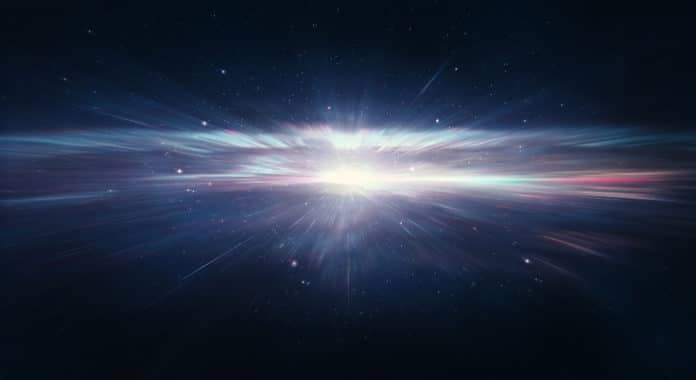The big bang is a leading explanation of how the universe began. At its simplest, it says the universe as we know it started with a small singularity, then inflated over the next 13.8 billion years to the cosmos that we know today.
The explosion created particles, atoms, stars, galaxies, and life; the details of how it all happened to remain obscure.
A new study by the University of Copenhagen offers a fresh view of what happened in the first microsecond of the Big Bang. Scientists explored what happened to a specific kind of plasma called Quark-Gluon during the first microsecond of the Big Bang. The outcomes reveal a unique story of how the plasma evolved in the early stage of the universe.
You Zhou, Associate Professor at the Niels Bohr Institute, University of Copenhagen, said, “First, the plasma that consisted of quarks and gluons was separated by the hot expansion of the universe. Then the pieces of quark reformed into so-called hadrons. A hadron with three quarks makes a proton, which is part of atomic cores. These cores are the building blocks that constitute Earth, ourselves, and the universe that surrounds us.”
The Quark-Gluon Plasma (QGP) was created in the first 0.000001 second of the Big Bang and immediately disappeared due to expansion. Using the Large Hadron Collider at CERN, scientists could recreate this first matter in history and trace back what happened to it.
You, Zhou, said, “The collider smashes together ions from the plasma with great velocity – almost like the speed of light. This makes us see how the QGP evolved from being its matter to the cores in atoms and the building blocks of life. In addition to using the Large Hadron Collider, the researchers also developed an algorithm that can analyze the collective expansion of more produced particles at once than ever possible before. Their results show that the QGP used to be a fluent liquid form and that it distinguishes itself from other matters by constantly changing its shape over time.”
“For a long time, scientists thought that the plasma was a form of gas, but our analysis confirms the latest milestone measurement, where the Hadron Collider showed that QGP was fluent and had a smooth, soft texture like water. The new details we provide is that the plasma has changed its shape over time, which is quite surprising and different from any other matter we know and what we would have expected.”
According to the study, the study takes them a little bit closer to solving the puzzle of the Big Bang and how the universe developed in the first microsecond.
Journal Reference:
- S. Acharya et al. Measurements of mixed harmonic cumulants in Pb–Pb collisions at TeV. DOI: 10.1016/j.physletb.2021.136354
